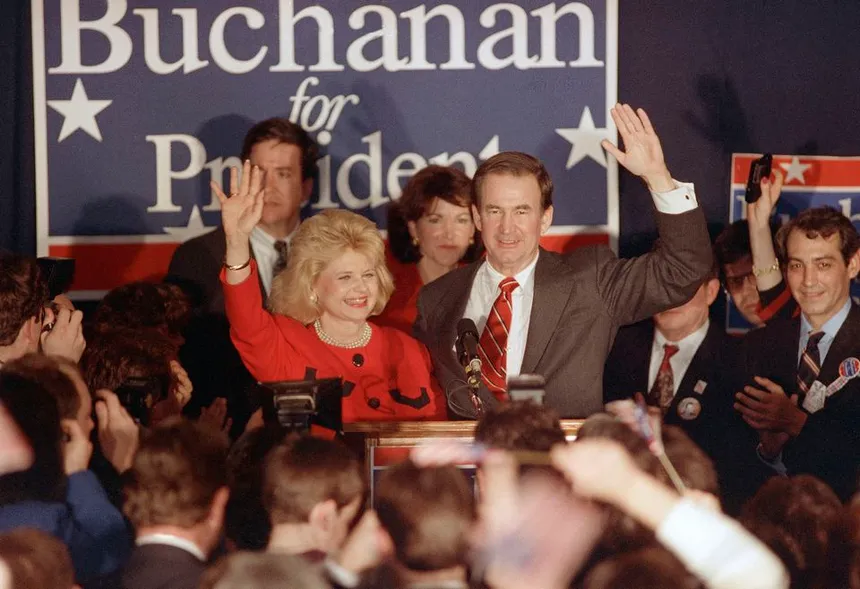Shaping the GOP
The Evolution of Evangelical Influence
Last month, the Republican National Convention (RNC) softened its decades old pro-life statement. At the Convention in Milwaukee, a porn star and Sikh prayer headlined.
Many Evangelicals may be feeling like James Wood, who commented that, “The GOP has effectively abandoned evangelicals for barstool populism, or exposed that the contemporary sociological category of ‘evangelicals’ is largely coterminous with barstool populism.”
Of course, the current situation and history of the Republican Party and Evangelicals is more complicated than that.
In short, what we’re seeing is not abandonment, not exactly. If Evangelicals are going to reevaluate their relationship to the Party they’ve largely called home for decades, they should do so in an informed way.
Where We Are Today
First, the makeup of the Grand Ole Party itself is instructive.
For some time, at least four decades, there have been three main factions in the Republican Party.
First, there are the Neoconservatives and Chamber of Commerce Republicans, the influence of which is now dwindling as the Bush era (its peak) fades from memory. This faction supports foreign intervention, globalist trade and immigration, propositional nationhood, etc. As alluded to already, this wing had been driving the bus of the party. They made overtures to social conservatives but weren’t particularly interested in evangelical issues any more than they had to be to get their vote.

They also worked hand in glove with the compromised pro-life establishment and did precious little to actually get wins on life and marriage. Many evangelical political pundits who shared their vision on destroying America through open borders and unchecked trade kept quiet about this because they were allies on the economic, foreign, trade, and immigration policies (which were terrible).
Second, the national populists. This was the Buchananite wing that was banished from the elite levels of the party by Buckley and Reagan conservativism. This faction rejects propositional nationhood, supports America First trade and immigration, and practices foreign policy realism and global intervention restraint.

This wing also hasn’t been aggressively focused on life/marriage in the evangelical/social conservative sense, though Buchanan was an outspoken critic of the homosexual movement. With Trump/Vance, this wing has amazingly won control of the party. It’s a major upgrade over Nation Review-George W Bush conservatism. They are better—and more Christian—on those other major issues facing the American working class (immigration, trade, foreign policy) and the base of the GOP. They are driving the bus now and that is a win.
Third, Evangelical or social conservatives. The Moral Majority (think Jerry Falwell Sr) wed the evangelical vote to the Neoconservatives. The Moral Majority is absolutely batting a 1000 on their warnings about the slippery slope of the moral degeneration of America. Falwell Sr. was a great Christian man, and his work was very necessary. But even with the rise of the Moral Majority, and its downstream impact, social conservatives and evangelicals were never driving the bus of the GOP.
And once you consider how the failed pro-life establishment really worked as a pacifier to keep support from evangelicals for the NeoCon faction even though they never really gave them wins, you begin to see more clearly that the Neoconservatives just used evangelicals. Maybe they had “stronger” language in their platforms, but what wins on life and marriage did they really deliver?
Who delivered the end of Roe v. Wade? Trump—and by extension, the working-class voters who put Trump in office in 2016. Evangelicals need to realize we were never in charge, and we aren’t in charge now. And, frankly, the horrible evangelical positions on mass immigration and support for endless wars (how many Christian leaders worked to justify the Iraq Invasion?) puts them at odds with the working-class national populist base.
Evangelicals are still on the bus, with (in the Trump-Vance ticket) a much better driver, but we are going to have to work very hard to win the working-class populists to support our conservative social concerns. Just like we had to do with the Neoconservatives.
How We Got Where We Are Today
Second, and to further understand how Evangelicals with their social concerns fit into the GOP establishment, you need to understand some history.
The relationship you are used to between the religious right and the Republican Party did not always exist.
In the early 1970s, Wes Granberg-Michaelson reported that “in seminaries and social action bureaucracies of the church in the United States, it [was] becoming acceptable and almost chic to confide to others that you are a Marxist.”
Mainstream evangelicals like Carl Henry, the founding father of neo-evangelicalism, Paul Rees of World Vision, and Foy Valentine of the Southern Baptist Convention (SBC) all signed the Leftist “Chicago Declaration.” Valentine even helped the SBC pass a resolution that maintained abortion was permissible in some cases. In 1976, Jim Wallis predicted that “more Christians” would “come to view the world through Marxist eyes” due to “young evangelicals” and their “zeal for social change.” Neither abortion nor homosexuality were that much of a concern. Contemporary observer Richard Quebedeaux believed young evangelicals were trending Left.
It is important to understand that these progressive Evangelicals were primarily made up of aspiring elites and a different group from the non-elites who mobilized politically in the 1980s. David Swartz reported that “well over two-thirds of the evangelical left held education, social service, and religious jobs.”
Yet, the ideological narrowness of this movement made it hard for the Evangelical left to appeal to the working-class demographic which eventually composed the populist religious right. Identity politics tore apart the group that drafted the Chicago Declaration. This coupled with Jimmy Carter’s failed presidency and the replacement of “positive world” with “neutral world” realities gave rise to the religious right.
In reaction to the Equal Right’s Amendment and issues that began filtering into local communities, such as ending school prayer, abortion, homosexual adoption, equal protection, and religious tax exemption, rank and file evangelicals started organizing groups to represent their concerns.
Throughout the 1990s, religious right populism was institutionalized and integrated into the GOP machine where their concerns were acknowledged even while they were kept out of elite ranks where Roman Catholics mainly dominated. The unofficial arrangement between these two groups represented a deal that must be understood if one is to make sense of current conditions. The Christian Coalition, led by Ralph Reed, became the quintessential organization to represent this fusion.
Reed offered Republican campaigns Evangelical resources, mailing lists, and volunteers in a cooperative effort to elect candidates. The Christian Coalition backed establishment George Bush in 1990 instead of the populist Pat Buchanan. This strategic error set the religious right on a course away from its initial populist instincts and toward the pursuit of recognition by powerful elites. In return, Bush and Quayle signaled to the National Association of Evangelicals and the Southern Baptist Convention that they would include social issues in their platform. Ralph Reed called it “the most conservative and the most pro-family platform in the history of this party.”
Abortion was never a top concern for voters nationwide, but it did come to characterize and motivate the religious right. One of George Bush’s advisors told the New York Times in 1990 that “the President would ultimately profit from sitting out the [abortion] fight, because even if Roe v. Wade was overturned most states would move to restore abortion rights on their own, thereby distancing Mr. Bush from the fallout from such a Supreme Court decision.” This has been the general Republican disposition since then.
When Republicans pushed the 1994 “Contract with America,” which hardly mentioned homosexuality and only called to end partial birth abortion, the Christian Coalition supported it. Ralph Reed said, “Our movement is now in many ways thoroughly integrated and enmeshed into the machinery of the Republican Party.” The next year he stated, “we have gained what we always sought—a place at the table, a sense of legitimacy and a voice in the conversation.” Pat Buchanan rightly observed: “The Coalition has given away any boldness in a search for popularity and consensus.”[1. Frances FitzGerald, The Evangelicals: The Struggle to Shape America (Simon & Schuster, 2017), 422.]
As the 1990s wore on, the Christian Coalition broadened its net by including Jews, Catholics, and endorsing religious pluralism. A generally watered-down anti-abortion stance coupled with a vague notion of “family values” became the religious right’s unique trait as their leadership pursued an ever-diminishing feeling of importance and influence. Most Christians remember the history past this point.
Evangelical organizations, regardless of how principled, tended to focus exclusively on certain social issues while gaining commitments from presidential candidates who did little to move the needle in their direction. GOP conventions featured prayers from Christians along with Muslims, Sikhs, Jews, and Mormons long before 2024. Christian leaders had their place, but not a monopoly. Meanwhile, the country slid socially Left eventually leading to the election of populist Donald Trump.
Evangelical leaders were weak on the social issues that ignited Trump’s campaign including immigration, outsourcing and corruption. Throughout the 2000s they had largely either continued to ignore or steadily softened on issues such as gun rights, globalism, immigration, the surveillance state, and welfare. Trump was never “their” guy, but he moved the needle for them in ways previous establishment Republicans failed to do on abortion.
Simultaneous with the waning influence of the religious right was also the ascendance of the once defeated evangelical left. Figures like Russell Moore, David Platt, and Tim Keller joined other institutional elites to oppose Trump, even watering down their pro-life commitments by incorporating other “life” issues prioritized by the Left. They set themselves up against populism by condemning it in strong terms.
Seeing little alternatives, the vast majority of evangelical voters supported Trump in 2016 and 2020, but their leadership started giving up the influence they previously enjoyed on the political Right. After politically defeating the establishment at the 2024 convention with the selection of vice-presidential candidate J.D. Vance, Trump altered the character of the Republican Party. One of the changes he brought was watering down the party platform on marriage and abortion: a reversal of the deal cut in 1990.
The evangelical political industry could no longer expect the largely vacuous rhetoric establishment Republicans offered them, or the feeling of importance that came with it. What they could still expect was a seat at the table. It was a smaller seat in some ways, but it was a seat. Not a symbolic overture.
What remains to be seen is how traditional Christians handle the social changes over the next few years. The outcry online against a Sikh prayer at the 2024 convention and the overtly moral and Christian language used to describe the Left’s agenda for corrupting children and liquidating America’s future are the breeding grounds for another authentic “religious right.” One that’s actually serious, populist, and realistic.
What is derogatorily called “barstool populism” is, in many ways, a major upgrade over Neoconservatism, even though it is not where we want to be on life and marriage. In truth, Neoconservatives that branded themselves as social conservatives were always pretending to be better on moral issues than they actually were.
Evangelicals, in particular, need to get stronger, more engaged, and better organized. We should welcome the changing of the guard from Neoconservatives to National Populists and work with them to wed social conservatism, the priorities of the new Christian right, to this new party.
Americans have not really seen this kind of thing in full bloom since the 1980s. It’s time for it to, as they say, retvrn.